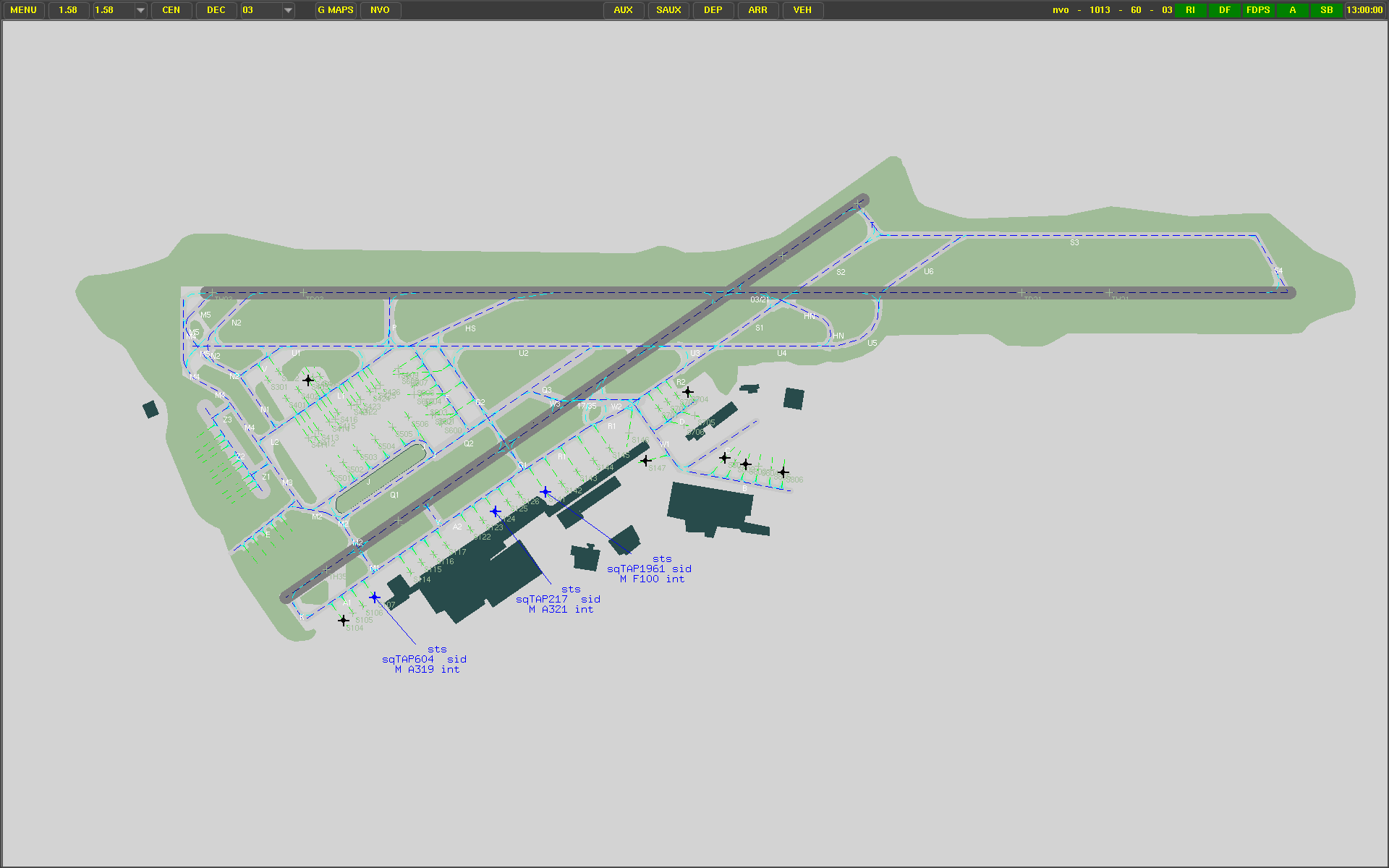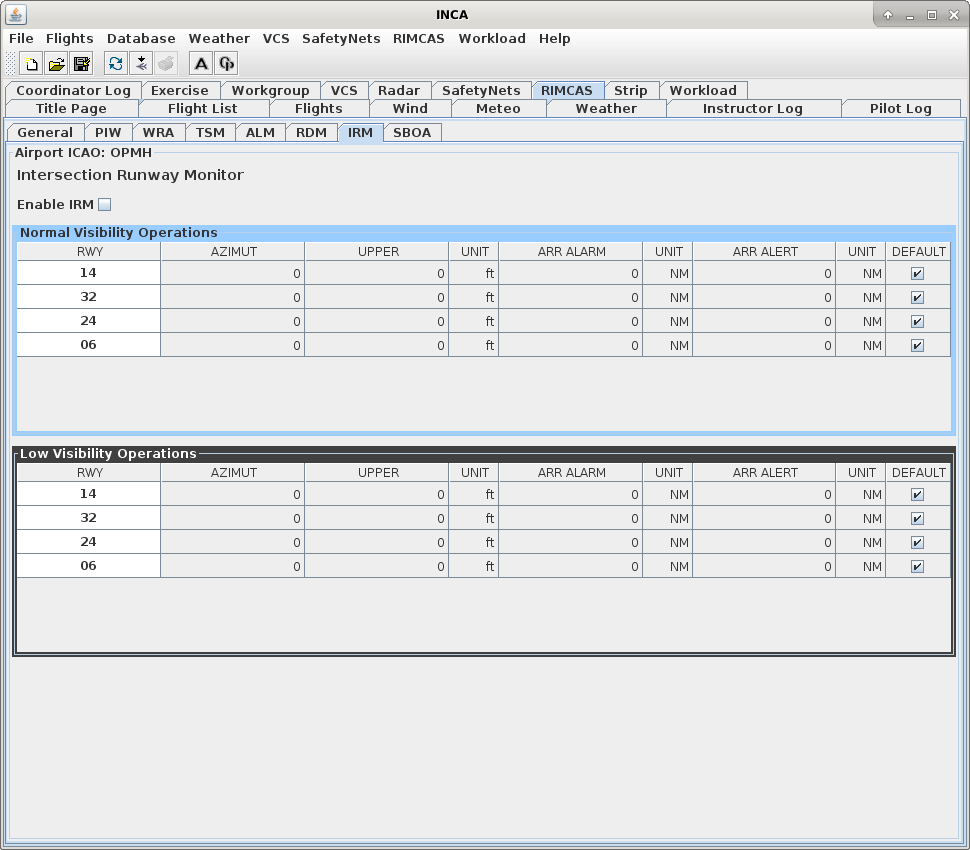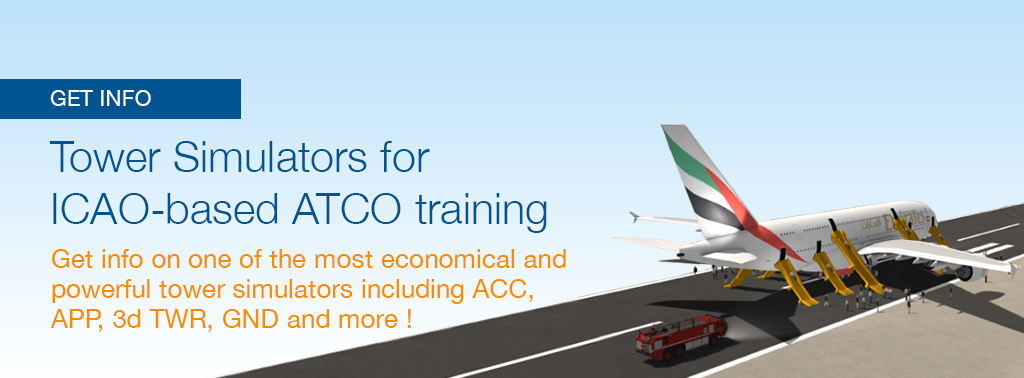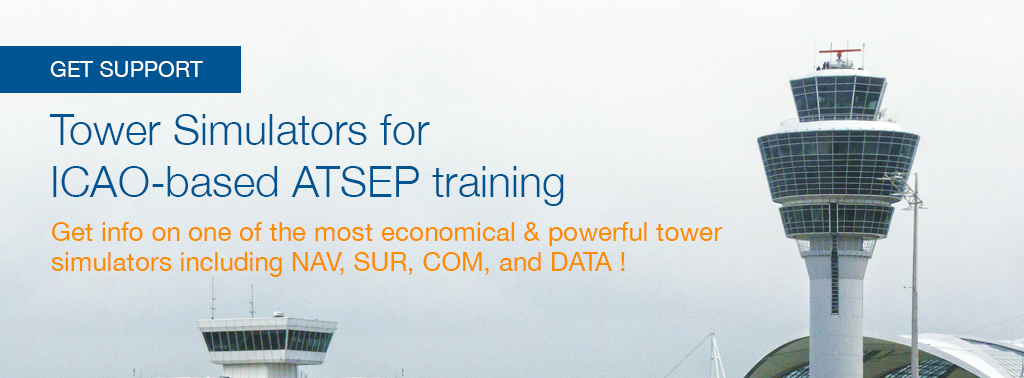In the Doc 9830, ICAO defines Advanced Surface Movement Guidance & Control Systems (A-SMGCS ) as systems "providing routing, guidance and surveillance for the control of aircraft and vehicles in order to maintain the declared surface movement rate under all weather conditions within the aerodrome visibility operational level (AVOL) while maintaining the required level of safety" [1]. But what is required in a good simulator for A-SMGCS?
Tower Simulator including A-SMGCS in Compliance with ICAO Doc 9830
 Like in a real system, make sure that the simulator fully follows the ICAO DOC 9830. We at SkyRadar even use a real, and fully operational A-SMGCS system (as part of our tower simulator) and feed it with simulated inputs. To make it more realistic, we always suggest to also add real life input (if available), and to display it in the tower simulator.
Like in a real system, make sure that the simulator fully follows the ICAO DOC 9830. We at SkyRadar even use a real, and fully operational A-SMGCS system (as part of our tower simulator) and feed it with simulated inputs. To make it more realistic, we always suggest to also add real life input (if available), and to display it in the tower simulator.
A-SMGCS can be deployed as part of SkyRadar's tower simulator.
Modular and Interactive Design
To allow for best learning output, the system shall be highly interactive and modular. The students ideally should have their home airport simulated.
Once new features like multilateration will be added to your airport in real-life, it should be possible to add them also in the simulator. We also suggest to have at least one fantasy airport ("seahorse airport") with challenging features like runway crossing or parallel runways.
Coverage
The simulated A-SMGCS should be able to cover the whole territory of the movement of aircraft, vehicles, and other object moves on land (movement area: apron, taxiway and runway), including the final approach area (minimum 10 NM to the runway touchdown zone). When you choose an A-SMGCS which is part of a Radar and Tower simulator, evidently the area will be much larger.
Target display
The simulator shall be able to show the target vehicles and other moving objects. Even targets from life feeds shall be displayed.
For cooperative targets, A-SMGCS shall be able to show the target vehicle containing the following information:
- Identification/call sign
- Vehicle Category
- Vehicle Speed
Like in real life, the system should also display non-cooperative targets.
Data display
There are two types of data which the simulator shall be able to display:
- default information
- non default data (hidden data)
The A-SMGCS simulator should be able to display the aircraft label that contains the default information:
- Aircraft Identification or Transponder Code
- Type of Aircraft
- Wake Turbulence Category
- Parking stand
A-SMGCS should be able to display information (data tag), which by default is hidden. Such data can be displayed in full through specific buttons that can be accessed via mouse interactions:
- Aircraft speed
- Elevation
- Destination/Point of Departure
- Other Information (the information is input manually by the user)
The type of data to be displayed in the label shall be configurable. A standard configuration available by default makes ramp up easy. The A-SMGCS simulator should have a second window that can display traffic display the same situation with the main window
It should also have a list of traffic in the form of rows of a list of aircraft that are currently active and a list of traffic in the form of rows of a list of aircraft which pre-active, with the time parameters that can be configured.
Warning System
Important in all training contexts are the situations of danger, either through incidents or dangerous situations on the airport or through depreciated systems. The simulator should allow for both.
The A-SMGCS simulator shall be equipped with a warning system in the form of visual and audible alert the controller if there is potential danger of collision between aircraft, with other vehicles in the movement area, as well as among aircraft in the area final approach to the departing aircraft or crossing the runway of the current or vice versa.
Regulations differ depending on the areas of jurisdiction. Therefore, the warning system on the A-SMGCS simulator needs to be configurable in accordance with the applicable rules or with the needs.
Each tower simulator comes with a working position for configuration and exercise preparation. This working position s used for setting the parameter value.
Recording and Replay
Important in each tower and radar simulator is the record and replay feature. It allows to record and play back suitable selection of the desired time by the operator may be authorized. In a good simulator, Playback Data can be imported or taken with ease and in a common video format.
Some statistical functions, which we suggests to be in an A-SMGCS simulator are:
- Number of warnings that arise from conflicts between aircraft per day, per month and per year or can be selected according to needs.
- Number of warnings that arise from the conflict between the aircraft with other vehicles in the movement area per day, per month and per year or can be selected according to needs.
- the number of runway usage per day, per month and per year or can be selected as needed.
- The system will be able to record the time it takes from the parking stand toward the runway according to each type of aircraft.
- The system will be able to record the time it takes from the runway toward the parking stand according to each type of aircraft.
Connecting Live Data
In receiving data in the form of Mode S and Mode A / C, ADS-B and multilateration data, the simulator should be able perform estimation and tracking the target position, and then plotted into the Multi-Sensor Data Processing System in ASTERIX format.
Talk to the experts
It will be our pleasure to talk about your specific requirements, wishes and needs. Looking back on many years of experience in implementing these systems, we would love to turn our experience and standard solutions into your powerful engine for training and qualification.
References
- ICAO Doc 9830: Advanced Surface Movement Guidance and Control Systems (A-SMGCS) Manual)
- [1] Advanced Surface Movement Guidance and Control System (A-SMGCS) (retrieved September 2020), by SkyBrary







